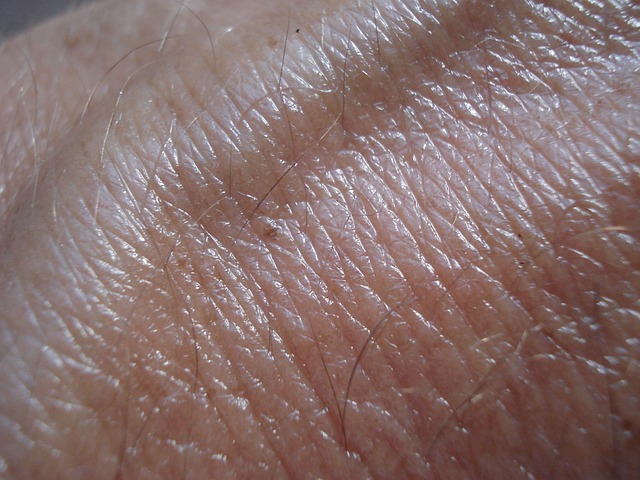Skin tags, caused by friction and overproduction of collagen, can be removed through various methods, including surgical excision, cryotherapy, and laser removal, each with pros and cons. The Bradford Tag Removal method offers a gentle yet effective solution using a sterile needle for pain-free and scar-less removal, especially suitable for sensitive areas like the groin. Proper aftercare, including hygiene, is crucial for optimal results, preventing new tags, and avoiding complications.
Skin tags, those small, harmless growths on our skin, can sometimes become a source of concern, especially in sensitive areas like the neck or armpits. This article delves into understanding these non-cancerous skin lesions and offers a comprehensive guide to effective Bradford tag removal. We explore common methods, focusing on safe techniques for delicate regions, and provide essential aftercare tips to ensure optimal results while addressing this common skin concern.
- Understanding Skin Tags and Their Formation in Sensitive Areas
- Common Methods for Bradford Tag Removal: A Comprehensive Overview
- Safe and Effective Removal Techniques for Delicate Regions
- Aftercare and Prevention Strategies for Optimal Results
Understanding Skin Tags and Their Formation in Sensitive Areas
Skin tags, also known as acrochordons, are small, soft skin growths that typically appear in areas where skin rubs against itself, such as the neck, armpits, and groin—including sensitive areas like the genital region. While they are generally harmless, many people opt for Bradford Tag Removal due to aesthetic concerns or discomfort caused by their presence.
The formation of these tags is often linked to friction and constant irritation. In sensitive regions, skin tags can develop as a response to increased friction from clothing or adjacent skin, leading to the growth of excess collagen and keratin cells. Understanding this process is crucial when considering treatment options for Bradford Tag Removal, especially in delicate areas where traditional removal methods might cause further sensitivity or scarring.
Common Methods for Bradford Tag Removal: A Comprehensive Overview
When it comes to Bradford tag removal, several common methods offer effective solutions for those seeking relief from these small skin growths. One popular approach is surgical excision, which involves a doctor cutting out the tag and sealing the skin. This method is suitable for larger or more prominent tags and ensures immediate results. However, it may leave a small scar and requires local anaesthesia.
Another common technique is cryotherapy, where liquid nitrogen freezes and destroys the skin tag. This non-surgical procedure is quick and relatively painless, making it a popular choice for sensitive areas. While it might cause temporary redness or itching, many find it an acceptable trade-off for the convenience of an in-office treatment. Laser removal is yet another option, targeting the tag with specific laser wavelengths to burn and eliminate it. This method is precise but may require multiple sessions and can be more expensive than others. Each approach has its advantages and considerations, catering to different comfort levels and budgets.
Safe and Effective Removal Techniques for Delicate Regions
When it comes to removing skin tags from sensitive areas, safety and efficacy are paramount. For delicate regions like the neck, armpits, or groin, traditional methods might not be suitable due to potential skin irritation or scarring. Fortunately, advancements in dermatology have offered gentle yet effective solutions. One such technique gaining popularity is the Bradford Tag Removal method, which utilizes a precise, sterile needle to carefully excise the tag while minimizing damage to surrounding skin.
This innovative approach ensures that the removal process is as pain-free as possible and reduces the risk of complications often associated with harsher treatments. It’s ideal for individuals seeking a discreet and effective solution for their sensitive areas. The Bradford method not only removes the visible tag but also reduces future growth in that specific region, providing long-lasting results without the side effects of more aggressive procedures.
Aftercare and Prevention Strategies for Optimal Results
After successful skin tag removal, proper aftercare is crucial for achieving optimal results in Bradford Tag Removal procedures. It’s important to keep the treated area clean and dry, avoiding harsh scrubs or products that may irritate sensitive skin. Gentle cleansing with a mild soap and warm water followed by patting the area dry is recommended. Applying a thin layer of fragrance-free moisturizer can help soothe and maintain skin hydration.
Prevention strategies play a vital role in managing existing skin tags and averting future growth. Maintaining good personal hygiene, avoiding friction or irritation around affected areas, and refraining from biting or picking at skin tags are essential practices. Regularly examining your skin to identify any new or changing skin tags can also help in early detection and prompt action.
Removing skin tags from sensitive areas requires a thoughtful, safe approach. By understanding the causes and careful consideration of available methods, you can achieve effective Bradford tag removal while minimizing risk. Incorporating gentle techniques specific to delicate regions, coupled with proper aftercare, ensures optimal results and prevents future growth. Remember, professional advice is always valuable when dealing with sensitive skin, ensuring peace of mind throughout the process.
